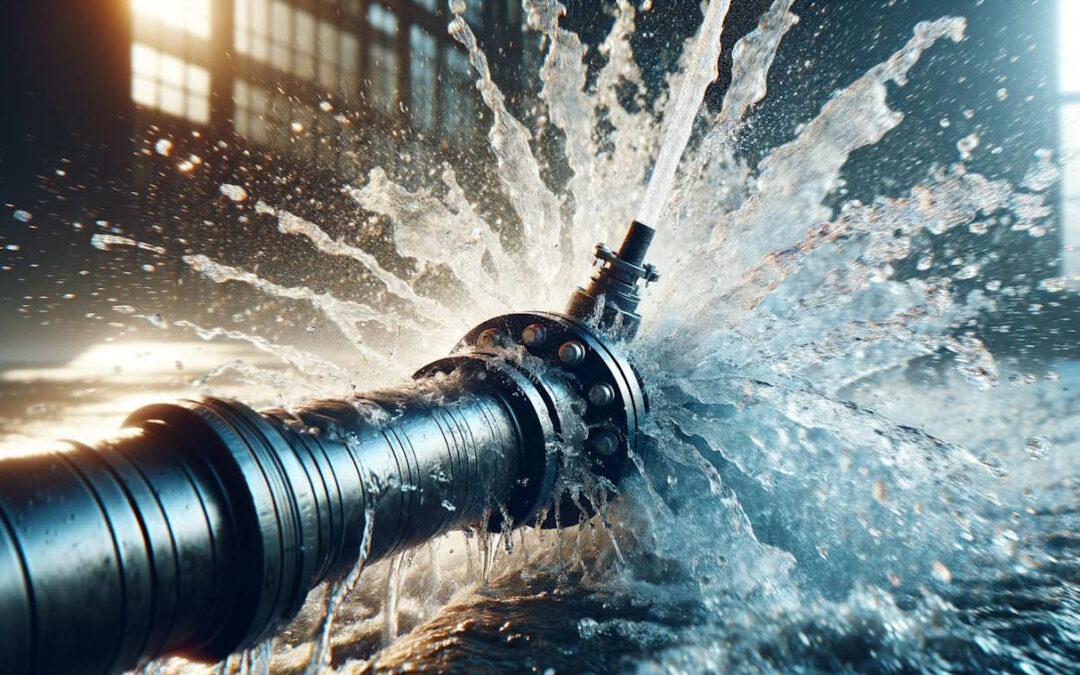Leading Water Leak Detection Techniques to Protect Your Building from Water Damages
Leading Water Leak Detection Techniques to Protect Your Building from Water Damages
Blog Article
Innovative Solutions for Very Early Discovery of Water Leakages in Buildings and Framework
As the integrity of structures and infrastructure is extremely important, the difficulty of early discovery of water leaks has stimulated innovative services that guarantee to change the means we protect against possible damages. From sophisticated leak detection innovations to the release of IoT sensors for real-time monitoring, the landscape of leakage prevention is evolving quickly. Artificial intelligence formulas supply a glance into the future of leak prediction, while thermal imaging offers a non-intrusive technique for pinpointing hidden leakages. Automated water circulation evaluation systems are reshaping exactly how leakages are identified and attended to, leading the way for a positive technique to water leakage discovery. Each of these remedies holds the crucial to making sure the dependability and durability of our built atmosphere, triggering a change towards a more sustainable and effective future.
Advanced Leakage Discovery Technologies
Advanced leakage discovery modern technologies, outfitted with sophisticated sensing units and formulas, play an important function in quickly recognizing and determining water leakages in various setups. These technologies employ a mix of acoustic, thermal, and electro-magnetic picking up techniques to discover leaks accurately. Acoustic sensors identify the audio of running away water, enabling for accurate localization of the leak resource. Thermal imaging identifies temperature level modifications triggered by water leakage, giving one more effective method for leakage identification. Electromagnetic sensors can recognize modifications in magnetic fields brought on by water, offering yet an additional layer of leak detection capacity.

IoT Sensors for Real-Time Monitoring
In the realm of contemporary water leakage discovery, the integration of IoT sensors for real-time tracking stands for a pivotal development in improving aggressive leakage discovery abilities. These sensing units offer continuous tracking of water systems, providing real-time data on water circulation rates, pressure variations, and temperature modifications. By leveraging IoT modern technology, these sensing units can spot even the smallest anomalies in water use patterns, enabling early identification of prospective leakages prior to they rise right into significant problems.
IoT sensing units send data to a centralized system, where sophisticated formulas evaluate the details and create signals or notifications when irregularities are detected. This real-time monitoring capability allows building owners or center supervisors to without delay address leakages, minimizing water damages, lowering repair costs, and preserving water sources.
Furthermore, IoT sensing units can be integrated with building management systems, allowing for automatic reactions to discovered leaks, such as shutting down water valves or activating pumps to mitigate the impact of leakages. Generally, the execution of IoT sensors for real-time tracking substantially boosts the effectiveness and effectiveness of water leak discovery browse around these guys in structures Get More Information and infrastructure.
Artificial Intelligence Algorithms for Leak Prediction

One key advantage of making use of artificial intelligence for leakage prediction is its capability to constantly find out and improve its precision gradually. As more data is collected and fed into the formula, it can fine-tune its forecasts and adapt to changing problems, ultimately boosting the reliability of leak detection systems.
In addition, artificial intelligence formulas can assist in determining refined signs of leaks that might go undetected by conventional monitoring methods. water leak detection. By analyzing complicated data embed in real-time, these algorithms can give early warnings and signals, enabling punctual treatment and preventative maintenance to mitigate possible water damages and linked expenses
Utilizing Thermal Imaging for Leakage Detection
Thermal imaging modern technology uses a promising strategy for finding water leaks in different systems and frameworks. By making use of infrared radiation and temperature differences, thermal imaging video cameras can identify surprise link leaks that are not easily visible to the naked eye. When water runs away from pipes or frameworks, it commonly changes the temperature of the surrounding location, developing temperature differentials that thermal cams can catch. These temperature irregularities are after that translated into noticeable images, highlighting the exact place of the leak.
One of the crucial benefits of thermal imaging for leak detection is its non-intrusive nature. Overall, the use of thermal imaging technology improves the efficiency and precision of water leak discovery, making it an important tool for keeping the stability of buildings and frameworks.
Automated Water Circulation Evaluation Solutions
How can computerized water flow evaluation systems transform the detection and monitoring of leakages in different systems and frameworks? Automated water flow evaluation systems supply a positive strategy to leakage discovery by continually keeping track of water circulation prices and patterns. By developing standard information, these systems can swiftly recognize inconsistencies that might suggest a leakage, making it possible for prompt treatment to prevent extensive damage.
These systems make use of innovative formulas to examine real-time data and give instant signals when anomalies are discovered, permitting quick action to be taken. Additionally, automatic water flow evaluation systems can be incorporated with building administration systems or IoT systems, boosting general efficiency and making it possible for remote monitoring abilities.
Furthermore, the information collected by these systems can be utilized for predictive upkeep purposes, helping to determine possible weak points in the facilities prior to leaks take place. On the whole, the application of automatic water flow evaluation systems can significantly boost leak detection and management practices, ultimately causing set you back financial savings, decreased water wastefulness, and raised sustainability in structures and infrastructure.

Final Thought
In conclusion, the integration of advanced leak detection technologies, IoT sensing units, artificial intelligence algorithms, thermal imaging, and computerized water circulation evaluation systems uses cutting-edge options for early discovery of water leakages in buildings and facilities. These technologies allow real-time tracking, forecast of leakages, and efficient detection techniques to prevent water damage and wastefulness. Executing these remedies can assist in preserving the honesty and sustainability of water systems in different setups.
Report this page